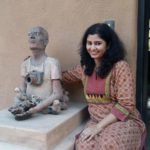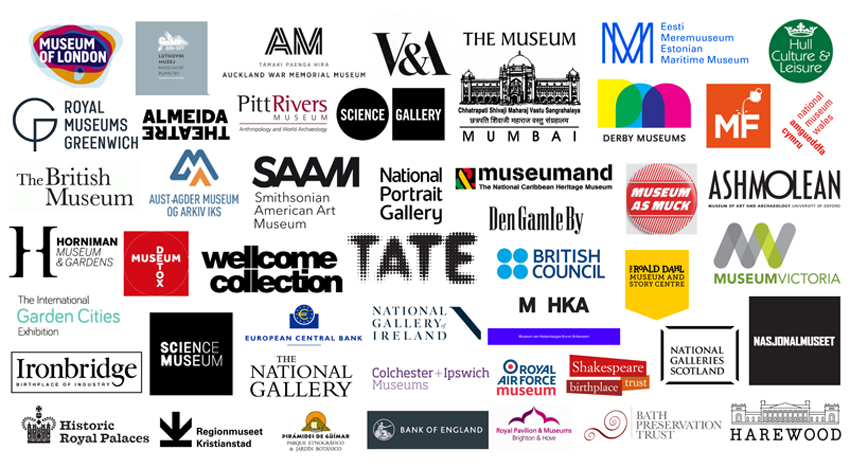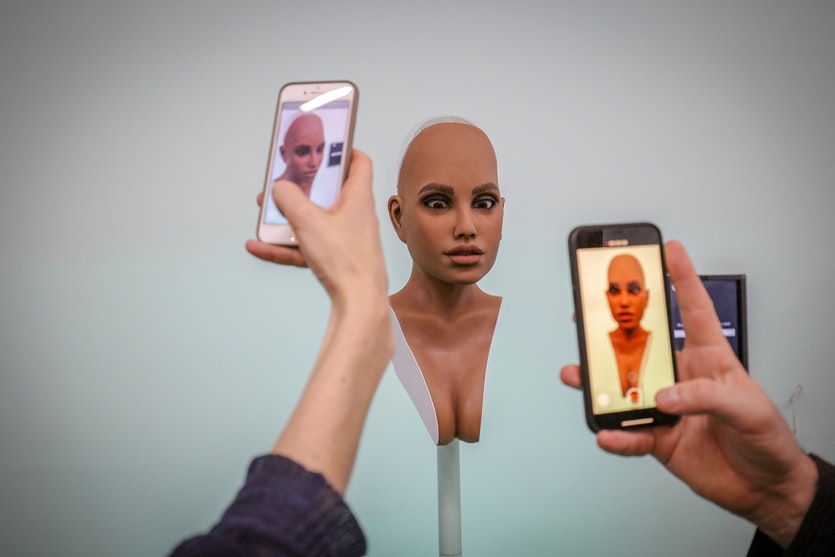Museum and social thinkers from the UK, Australia, USA, New Zealand, India and Sweden shared transformative ideas about what museums across continents are doing today at the Museum Ideas 2019 conference at the Museum of London earlier this September. Moving laterally away from the traditional image of the museum being an authoritative voice on fixed ideas of history and the need for it to become a living, breathing organism was highlighted. Two days packed with talks, discussions and conversations with participants made it amply evident that the social, environmental and political role of the Museum and its ability to ask questions creatively will play a key role in the future of humanity. Experiments along these lines are being realized fearlessly across the board.
The tone of the conference was contemporary, edgy and topical, in an attempt to pull the Museum into mainstream conversations. Museums across the board are on a rapid-response mode to issues and concerns, not only in creative industries but the world at large. Kayleigh Bryant-Greenwell from the Smithsonian American Art Museum, United States opened the conference with her powerful speech on the Museum historically being a tool of the establishment—an institution that validated power structures and created a clear class divide for engagement by only a certain type of people. Drawing metaphors from the popular fictional web-series Game of Thrones she identified challenges that museums face today from stereotyping and issues of patriarchy. She argued that through reflective practice and a reimagining of purpose, museums can exercise their power towards challenging the status quo, questioning hierarchies, address violence related to race, power struggles and gender questions. In a nutshell, Museums should stop ‘playing safe’ or remain ‘neutral’. Her full article can be read here. On similar lines Nina Finigan from the Auckland Museum, New Zealand spoke of the archive as an institution of power as it has always been at the centre of archival work: the power to retain, discard, and shape what is remembered and how. She urged that archives today need to be mindful of not merely continuing trends of collecting from the past but break the patterns and collect differently.
Also Read: Museums and Online Learning – Creating online learning resources
Several parts of the world are grappling with migrations from other countries. Nicola Bird, Community Engagement Officer, Oxford University Museums spoke of initiatives being undertaken at the Pitt Rivers Museum on the role that collections can play in supporting communities who are forced migrants settling in the UK. Multaka (meaning meeting point in Arabic) -Oxford is a two-year project, inspired by the internationally acclaimed Berlin project Multaka: Museum as Meeting Point, which creates volunteer opportunities for people who have recently arrived in the city as forced migrants, and which uses the museum collections as a focus to bring people together. Multaka aims to bring different perspectives to the presentation and interpretation of objects in two collections: Islamic Astronomical Instruments, and Textiles from the Arab World (recently donated to the Museum). It also offers people who have recently arrived in the UK the opportunity to practice their English, learn new skills and gain work experience.
Handling technology in the museum realm needs care and focus. Emily Siddons, Producer, Exhibitions, Experience and Engagement, Museums Victoria, Australia shared new and emerging approaches to the production and dissemination of cultural content that are testing the definitional limits of what constitutes a museum. As platforms shift and morph with rapid fluidity, new models of museums are emerging that attempt to bridge the digital and physical divide and engage with all spaces in between. Ryan Jefferies of the Science Gallery Melbourne, Australia spoke of a set of remarkable exhibitions that the Science Museum has been organizing there. Ideas around fundamental human existence such as their exhibition titled Blood, Disposable and Perfection address complex issues around people, their relationship with their bodies and surroundings. More on these exhibitions can be seen here. Clare Barlow of the Wellcome Collection spoke of the new displays at the Wellcome Gallery in central London that make the history of medicine and cure presented with simple and profound narratives for the public.
Speakers reiterated that museums need to cross-connect with other fields—performing arts and sciences, to begin with. Liam Wiseman, Relationship Manager, Museums, Arts Council England spoke of what museums can learn from theatre. Creating a miniature museum inside a working theatre is no easy feat, but that’s exactly what happened at the Bristol Old Vic theatre. Liam shared his process of being a museum professional in a theatre environment, as well as what museums could be doing to become more theatrical, particularly to address agency. Dan Vo, Project Coordinator, LGBTQ Tours, V&A illustrated his journey in creating the famous LGBTQ tour at the V&A as a non-binary and non-heteronormative narrative that explores a spectrum of gender and sexual identities through a selection of LGBTQ related objects. Dan also shared his research and narrative around queer lives, culture and theory that have been powerfully communicated through the tours. They are super popular.
One also needs to consider that in the real world today the distance between expertise and opinion is rather fuzzy and it is something beyond opinion or expertise that we should seek in participatory methodologies in museums. Examining co-curation as a tool for enhancing visitor-ship, participation or engagement are aspirations of a temporary nature. It would be useful to engage with the idea from the people’s side and see why would a member of the public need to have a say in a museum today? Or do they? I had the privilege of sharing my thoughts on co-curation in the cultural space. Museums are public institutions and real and vital contact with the public can and should have many layers and reasons. My talk examined some key models of co-curation in both the UK and India to explore what they can learn from each other. Co-curation and participatory work have been attempted within a wide range of projects in the world. These have involved people and communities at varying levels from seeking opinion to participation, consultation, placation, partnership, delegation and even enabling full citizen control of projects. I shared examples from India – The remembering Bhopal Museum in Bhopal, The Partition Museum in Amritsar, The Conflictorium in Ahmadabad, The Central Asian Museum, Leh and the CSMVS-Children’s museum in Mumbai and how these collections and approaches have benefited from conversations with stakeholders outside the museum’s own authority and how that has helped them remain contemporary. In fact, these are the new, real museums of India that have germinated far from the colonial memory and museum project.
The pithy and evocative ideas thrown at the Museum ID conference make it one of the most contemporary and ‘young’ museums conference of the world. Here the core idea of the Museum is nudged to create something that the world needs today. The Conference challenged the status-quo of museums across the world and the part that museum professionals need to play to make this shift for the survival of the museum institution as a relevant, thriving hub of ideas and thoughts.
~ENDS~
 Joyoti Roy has been working in the field of museums and culture for fifteen years and joined CSMVS in 2018. Roy is interested in the social role of museums and believes that arts institutions have the key responsibility to shape and reflect people’s futures. Roy has been a Charles Wallace India Trust Awardee for the year 2008 for a fellowship programme at the Tate Gallery, London. She was the Clore Leadership Fellow for Culture representing India to the UK in 2017–18 and worked with the Victoria and Albert Museum.
Joyoti Roy has been working in the field of museums and culture for fifteen years and joined CSMVS in 2018. Roy is interested in the social role of museums and believes that arts institutions have the key responsibility to shape and reflect people’s futures. Roy has been a Charles Wallace India Trust Awardee for the year 2008 for a fellowship programme at the Tate Gallery, London. She was the Clore Leadership Fellow for Culture representing India to the UK in 2017–18 and worked with the Victoria and Albert Museum.









Recent Comments